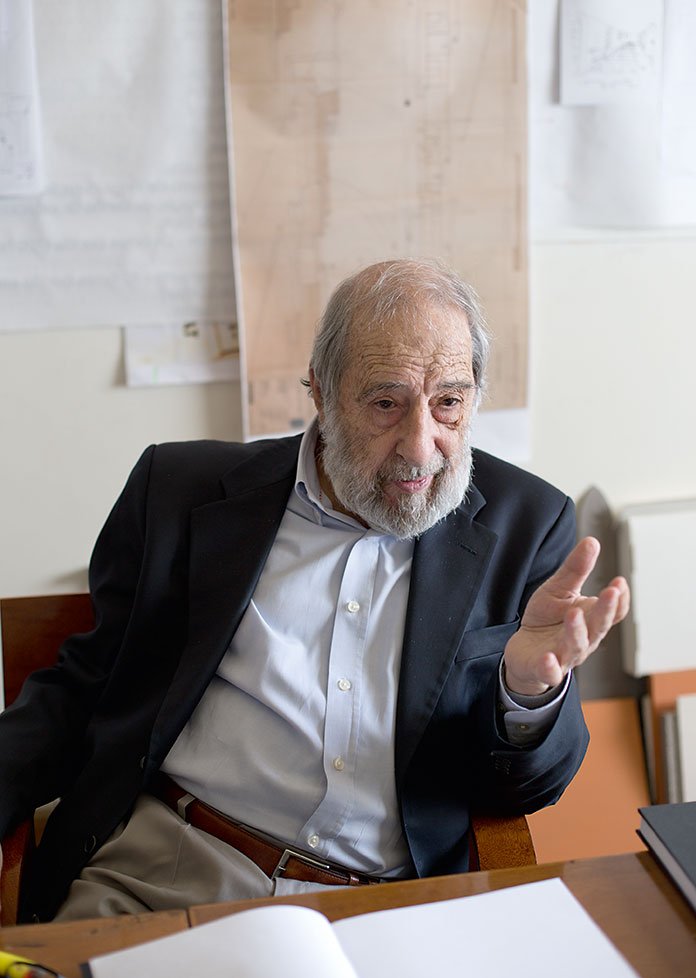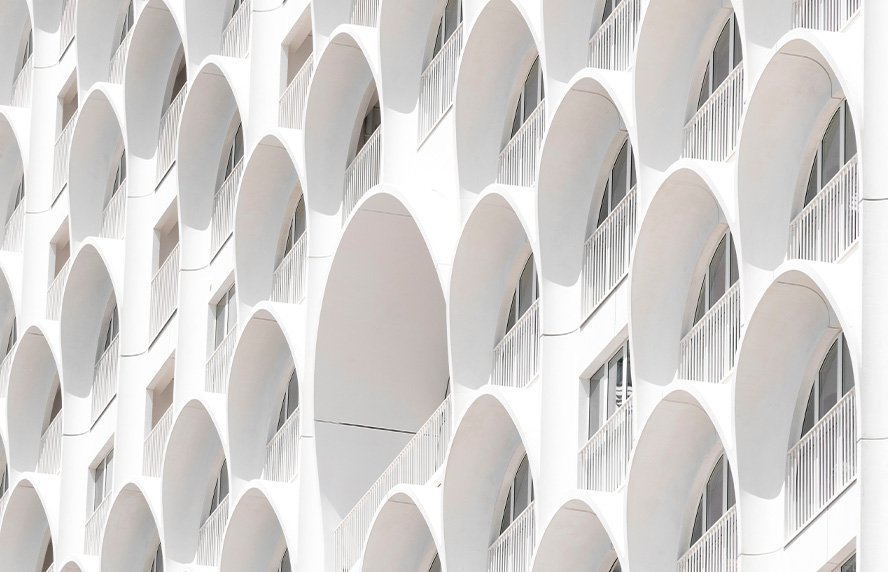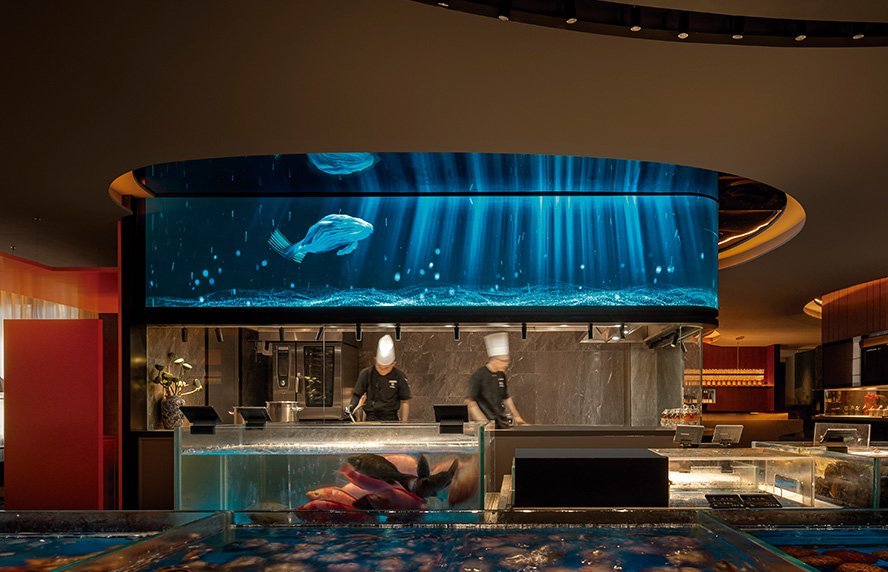
He is, and will always be, the icon of Portuguese architecture. He is known in the four corners of the world, through his unique projects and his extensive and enviable knowledge. Within the outlines of his life lie memories that are unrepeatable yet difficult to forget. Siza Vieira was born in 1933. He lived through two political phases. He felt the fear of the arrival of a war – he saw it come to an end. When he embarked on a career in architecture he was living in a very ‘closed’ country, with little information. He is from the time when the Italian influence, neo-realism and knowledge from Brazil, in the 1950’s, were being felt in the country. He went through several academic crises, after the revolution of April 25, 1974. He finished his course. Berlin was the first invitation to work outside of Portugal. The Netherlands came next, in the 80s. And since then he has never looked back. There have always been projects. Ideas too. He has developed a career founded on wisdom. And, asked about «sustainability in architecture», he gives us his opinion here.
What were your first projects like?
These projects, both in Berlin and later in the Netherlands, had to do with disadvantaged areas, in cities, and, at the same time, immigrant areas – immigrants who went to Germany, to the Netherlands, and other countries, to work in the reconstruction. When I was called, this great reconstruction movement was about to end, and therefore the immigrants were no longer wanted. There were already conflicts over immigration with pressure for me to leave. I worked, in both cases, in this context.
Fernando Távora invited you to work with him early in your career. Was this in recognition of your work?
No, it was not. He was my teacher. And he was the first teacher who talked to me, who took an interest and helped me, because I did not want to do architecture. I was not interested in anything and had no knowledge, or contact with any architect. It was a disgrace. He was the first to take an interest in me and understand that I was beginning to get interested. Then he invited me. But the invitation was not because he thought I was competent to work with him, but because, in Matosinhos, there were two students: myself and António Meneiros. António Meneiros is even related to Távora’s wife. So when he was asked to put on the exhibition in Matosinhos, he knew us and invited us. We participated in setting up this exhibition. Then there was another exhibition in Guimarães. He liked our work and invited us to this exhibition. Later, he invited me to work in his office. And I went to work there. Not only was it an apprenticeship, but there were also important job opportunities in Matosinhos. Throughout my life, I worked several times with him.
"A sustainable home is a comfortable home”
In the meantime you also set up your studio.
I already had my space, which was a room above the Imperial, in the square where, at that time, I would park the car. We were five students in that room. He invited me (Távora). I was doing the first project, the first project, in Matosinhos. There were four houses on Avenida Dom Afonso Henriques. We became friends. We travelled a lot with a small group of friends.
Then later, already in your architecture firm, you also had architect Souto de Moura working with you. And even today you still work together, on several projects.
I was never Souto de Moura’s teacher. We work together. He worked with me for four or five years. Then he set up his firm.
And today you still do projects together.
We did Santo Tirso together because we were invited to do it together. The pavilion in London. Souto de Moura is one of the members of the group of travellers. Távora and I had offices in the centre of Oporto. The traffic made it difficult to get in and out, and Souto de Moura had a studio in the centre of Matosinhos, which, in terms of size, was no longer of use. We travelled with Cavaca. We had become great friends. Someone had the idea: «Why don’t we buy a piece of land and do a studio? Out of the centre, but not far from the centre». We got together, and brought an engineer into the group, and we dealt with all of this (the building of studios). When we met, I did the project. I wanted it to be Távora, who was the oldest, but he did not want to. Then I thought it should be Souto de Moura, who was the youngest, but he did not take it. I did it. It was fun.
And you shared the same building.
This land was so tempting. Not only for its view, which was better than it is today, but, in addition to this, there was a factory nearby, which was cast iron, which no longer worked, and in the plan it was to be an industry museum. It had a large garden, this was great, but the fact remains that at a certain time the factory caught fire and much was said about that fire, but, as a reward, the owner was given permission to create buildings higher than this. And he sold the land. And the dream of the garden and the museum went up in smoke.
"The working conditions of architects in public works are a disaster”
What would be the ideal home for you?
I think I’m such a difficult client that nobody wants to do it (he laughs). I live in a house made by Souto de Moura and before I lived in Misericórdia. I have lived 40 years in this one. Then, when I came here (Foz office), the traffic issue continued. I looked for a house and I was lucky to get one by Souto de Moura, near to Foz. It’s a three-bedroom property. My daughter lives there too.
What is sustainable architecture for you?
The first thing I would say is that talking about sustainable architecture is a fad. Of course architecture has to be sustainable, otherwise it is a disaster (he laughs). But this is already done with energy savings, thermal insulation conditions, solar panels, etc. And, of course, one thing that is certainly no longer regulated is "quality”. Not to mention "architectural quality”. This is not a matter of regulation, this is a matter of principle.
But what is this "sustainable construction”?
It is to do with materials, ecology, perhaps. I care more about something that has resulted in something good for the country, than about a regulation, which in essence requires conditions of comfort. Fundamentally it is having a comfortable house. A sustainable house is a comfortable house. It does not require heavy maintenance, although, in reality, it is more the regulated technical aspects, that flourish. Because other very urbanistic aspects that have to do with it are not so taken care of.
But what is the main difference of sustainable architecture?
It’s the same thing. It works with slightly different ingredients, but architecture is architecture, whether it be in wood, stone, or concrete. It is the problem of urbanization of space, compliance with rules that ensure comfort, and energy problems. Nowadays it is used a lot, mainly in real estate agent advertising, "sustainable houses”. But a few years ago, what counted for real estate agents was a bathroom, the lift and the marble kitchen, the rest didn’t matter. When I started to work almost there was no regulation, however, things were built well, because little was built. There was ‘brio’ on the part of the builders.
"The practise of our profession is on its knees”
And now this ‘brio’ no longer exists. Construction is not as good as it was?
There is good and there is bad. It depends on the requirement and the ability to demand answers to the requirement. This depends a lot on the value of the work. The owner is the first architect. If the owner does not want quality it cannot be achieved. And in public works, often, cutting the ribbon is what matters. And then conditions have got much worse. Apart from that, there were few architects, now there are many, probably too many. Ultimately this expansion of activity, including architects, was very important. There is always an improvement. But there are other very negative aspects. To start, us: the working conditions of architect’s in public works are a disaster. There are now principles assumed, which are architectural suicides. The same is true abroad, not just in Portugal. This crisis is soon part of the European community. Free competition is the remedy for everything. There are no rules that can change architects and there are people working, on the one hand, and what it costs today to design the project, from an architectural studio, is tremendous. And now, recently, it has been established that the projects are either put up for tender, and the results of the tender aren’t always good, this you can see, or, if it is by direct delivery, of the local authority’s choosing, the fee limit is, I believe, €65,000, no matter what the work. The instructions they have in public works are that, by direct delivery, only €65,000 can be given. This gives rise to subterfuge, which can even have a whiff of corruption about it, and often there is no subterfuge to be had. There was a decision that read: "the project will be awarded to the cheapest applicant”. This is incredible. And it costs the country a lot. Because quality has gone up in flames. Not least because there is a great deal of competition in construction, especially in Lisbon. Today prices are cheap. And not long ago, councils, for example, did not award works to the most expensive or the cheapest contractor. Now it goes to the cheapest. The last project I did took 20 years, from the time the project was delivered until it was built. Because contractors give impossible prices. At that time, especially, when there was little work. They at least got the first instalment and then they couldn’t do it and gave up. Then another invitation to tender had to be started, and a tender takes, on average, six months and sometimes they asked for a project in less than six months, but the construction tender takes six months because it is community-based and the burden of democracy is an incredible thing. The practise of our profession is on its knees.












